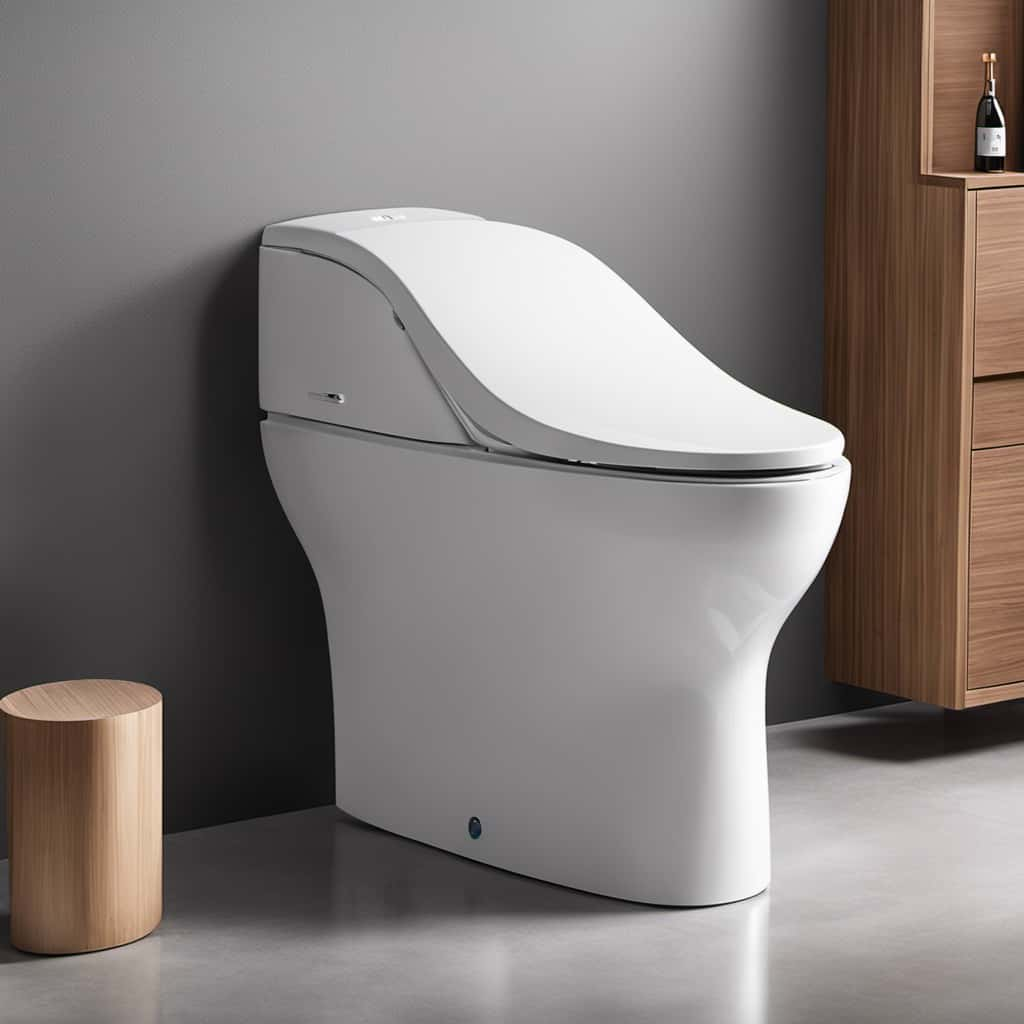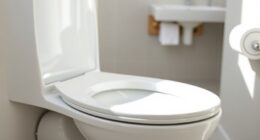Envision a planet where each time a toilet is flushed, it significantly affects our consumption of water. In this article, we’re going to delve into the effects that toilet flushing has on efforts to conserve water, as well as its impact on sewage systems and the treatment processes.
We’ll also examine how flushing can lead to contamination of water sources and affect septic systems. Join us as we delve into the global water scarcity issue and explore innovative technologies and sustainable alternatives to traditional toilets.
Key Takeaways
- Flushing toilets account for about 30% of a household’s total water consumption.
- Water-saving techniques, such as using low-flow or dual flush toilets, can significantly reduce water consumption without compromising functionality.
- Toilet innovation reduces water usage and helps alleviate the strain on sewage systems.
- Proper disposal of solid waste and regular maintenance of septic systems are important for avoiding health risks and ensuring effective functioning.
Impact on Water Usage
Flushing toilets significantly contribute to our water usage. It’s estimated that toilets account for about 30% of a household’s total water consumption. However, there are various water-saving techniques that can help reduce this impact and save both water and money on household budgets.
One effective technique is installing low-flow toilets, which use less water per flush compared to traditional models. These toilets are designed to maintain flushing power while reducing the amount of water used.
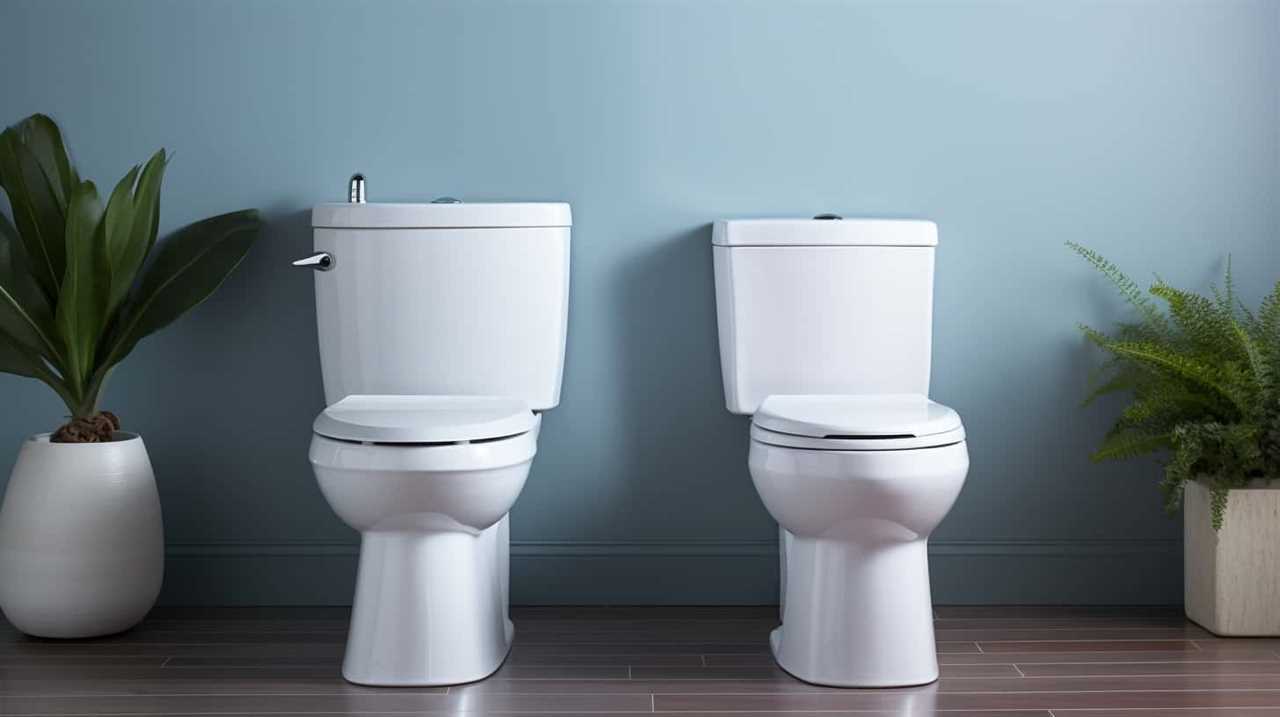
Another strategy is using dual flush toilets, which offer separate buttons or handles for liquid waste and solid waste, allowing users to choose the appropriate flushing volume.
Additionally, simple habits such as not using the toilet as a waste bin and fixing any leaks promptly can also contribute to water conservation.
Water Conservation Efforts
To promote water conservation, we can implement various strategies in our daily routines. One effective method is to adopt water-saving techniques, especially when it comes to our toilets.
One of the most practical ways to conserve water is through toilet retrofitting. This process involves modifying or replacing the existing toilet with a more efficient model that uses less water per flush. By retrofitting our toilets, we can significantly reduce water consumption without compromising on functionality.

Many modern toilets are designed to use less water by incorporating innovative flushing mechanisms and dual-flush options. These advancements allow us to choose between a low-flush mode for liquid waste and a higher flush mode for solid waste.
Overburdening Sewage Systems
Using excessive amounts of water when using the toilet can put a strain on sewage systems. This is particularly concerning in areas where water scarcity is a pressing issue. To address this challenge, toilet innovation has played a crucial role in reducing water consumption without compromising hygiene. By incorporating features such as dual flush systems or low-flow toilets, these innovations help conserve water and alleviate the burden on sewage systems.
To further understand the impact of water usage on sewage systems, let’s take a look at the table below:
| Water Usage | Average Amount (Gallons) |
|---|---|
| Traditional Toilet | 3.5 – 7 |
| Dual Flush Toilet | 1.6 – 1.28 |
| Low-Flow Toilet | 1.6 – 1.28 |
As seen in the table, toilet innovation significantly reduces water usage, helping to mitigate the strain on sewage systems.
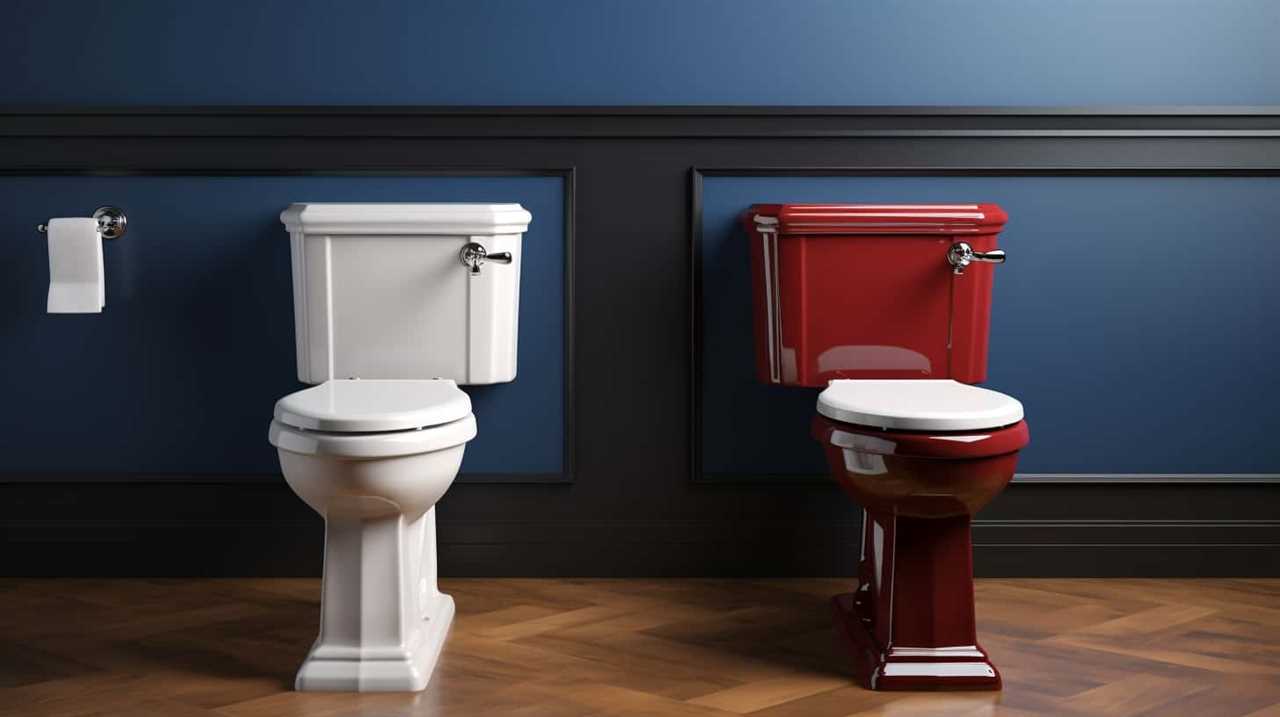
With a clearer understanding of the effects of excessive water usage on sewage systems, it is essential to explore the wastewater treatment process.
Wastewater Treatment Process
Now let’s explore the wastewater treatment process.
This process involves various water purification techniques to remove contaminants and pollutants from the wastewater before it’s discharged back into the environment.
It’s crucial to understand the environmental impacts of treatment and the importance of effective wastewater management to ensure the protection of our ecosystems and public health.

Water Purification Techniques
After flushing the toilet, we can observe the water purification techniques used in the wastewater treatment process. These techniques are crucial for ensuring the safety and quality of water for various purposes, including water reuse and maintaining toilet hygiene.
Here are three key water purification techniques:
- Physical Treatment: This involves the removal of large solids through processes like screening and sedimentation. These solid particles, such as toilet paper and other debris, are removed to prevent clogging and contamination in subsequent treatment stages.
- Chemical Treatment: Chemicals like chlorine or ozone are added to disinfect the water and kill harmful microorganisms. This step ensures that the water is safe for reuse or discharge into the environment.
- Biological Treatment: In this step, bacteria and other microorganisms are used to break down organic matter present in the wastewater. This process helps remove pollutants and nutrients, making the water cleaner and less harmful to the environment.
Environmental Impacts of Treatment
Throughout the wastewater treatment process, we must consider the environmental impacts of treating and disposing of wastewater.
One significant environmental impact is water scarcity. As the global population continues to grow and water resources become increasingly limited, it’s crucial to develop innovative solutions to minimize water wastage. Toilet innovation plays a vital role in this process. By implementing water-saving technologies such as low-flow toilets and dual-flush systems, we can significantly reduce the amount of water consumed during flushing.
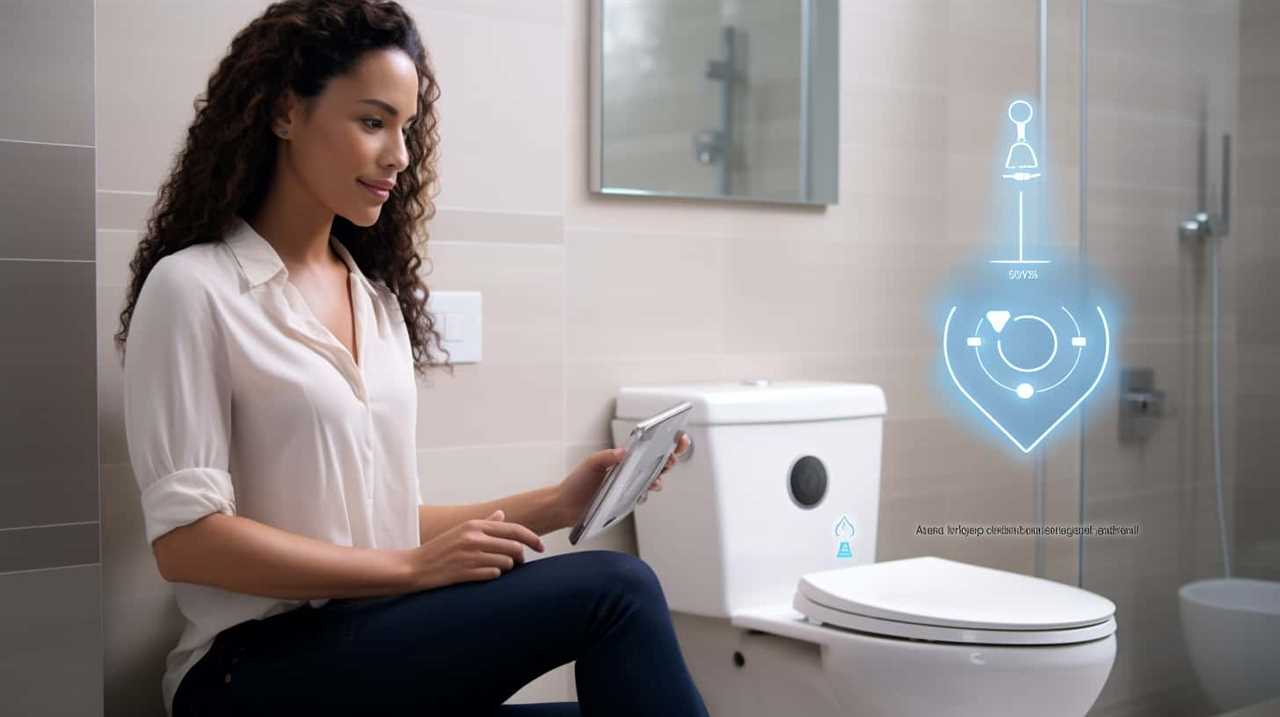
Additionally, the wastewater treatment process itself can have environmental implications. Traditional treatment methods may require large amounts of energy and chemicals, contributing to greenhouse gas emissions and water pollution. Therefore, it’s essential to explore and adopt sustainable treatment approaches that minimize the overall environmental footprint of wastewater treatment.
Importance of Wastewater Management
To ensure the preservation of our environment and the health of our communities, efficient wastewater management is of utmost importance. Proper wastewater management involves the collection, treatment, and disposal of wastewater to protect natural water sources and prevent the spread of diseases.
Here are three reasons why wastewater management is crucial:
- Water scarcity mitigation: With the global water scarcity crisis becoming increasingly severe, it’s essential to maximize the use of our available water resources. Wastewater treatment allows for the safe reuse of water, reducing the strain on freshwater supplies and ensuring a sustainable water future.
- Public awareness campaigns: Educating the public about the importance of wastewater management is vital. Public awareness campaigns can help people understand the potential hazards of untreated wastewater and the benefits of proper treatment. By raising awareness, we can encourage responsible water usage and promote the adoption of sustainable wastewater management practices.
- Environmental protection: Untreated wastewater can have significant negative impacts on aquatic ecosystems and biodiversity. Efficient wastewater management ensures that pollutants are removed before the water is returned to the environment, protecting fragile ecosystems and preserving the balance of nature.
Contamination of Water Sources
A significant number of water sources become contaminated due to the flushing of toilets. When toilets are flushed, the wastewater travels through a network of pipes and ultimately ends up in water sources such as rivers, lakes, and oceans. This wastewater contains various pathogens, chemicals, and pollutants that can contaminate these water sources.
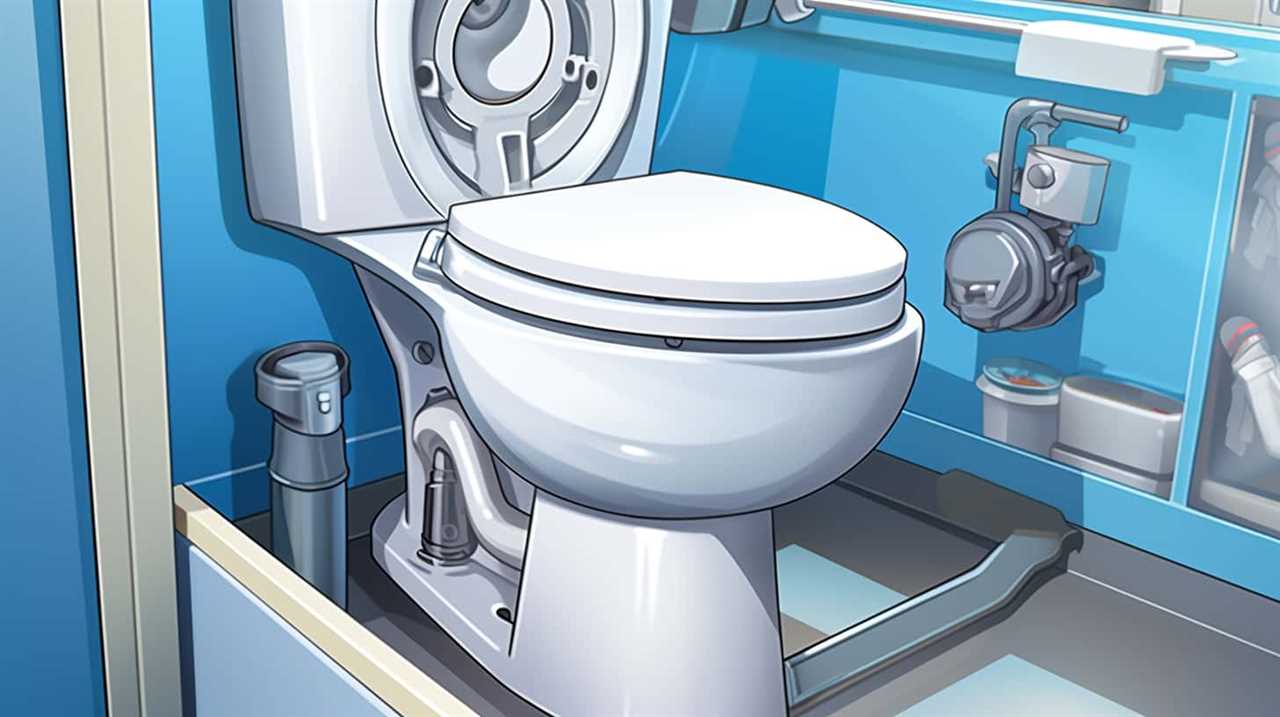
Once contaminated, the water becomes a breeding ground for harmful bacteria, viruses, and parasites, leading to the spread of waterborne diseases. Additionally, the presence of chemicals and pollutants can degrade the overall water quality, making it unsafe for human consumption and harmful to aquatic life.
Understanding the contamination of water sources is crucial for implementing effective measures to prevent further degradation of water quality and protect public health. This contamination of water sources through toilet flushing is just one aspect of the broader issue of environmental pollution.
Environmental Pollution
We have observed that flushing toilets contributes to environmental pollution in various ways. Here are three significant ways in which it impacts the environment:
- Water pollution: Flushing toilets can lead to water pollution due to the release of harmful substances and contaminants into the water supply. These substances can include chemicals from cleaning products, pharmaceuticals, and human waste. When flushed, these pollutants can find their way into rivers, lakes, and oceans, posing a threat to aquatic life and ecosystems.
- Impact on ecosystems: The pollutants released from flushed toilets can have severe consequences on ecosystems. Aquatic organisms, such as fish and invertebrates, can be harmed or killed by the presence of chemicals and toxins in the water. This disruption can lead to imbalances in the food chain and ultimately affect the overall health and biodiversity of ecosystems.
- Spread of pathogens: Flushing toilets can also contribute to the spread of pathogens, especially in areas with inadequate wastewater treatment systems. Disease-causing bacteria, viruses, and parasites present in human waste can contaminate water sources when flushed. This contamination can then spread to humans and animals, leading to waterborne illnesses and outbreaks.
In order to mitigate these environmental impacts, it’s crucial to prioritize sustainable wastewater management systems and promote responsible flushing practices.
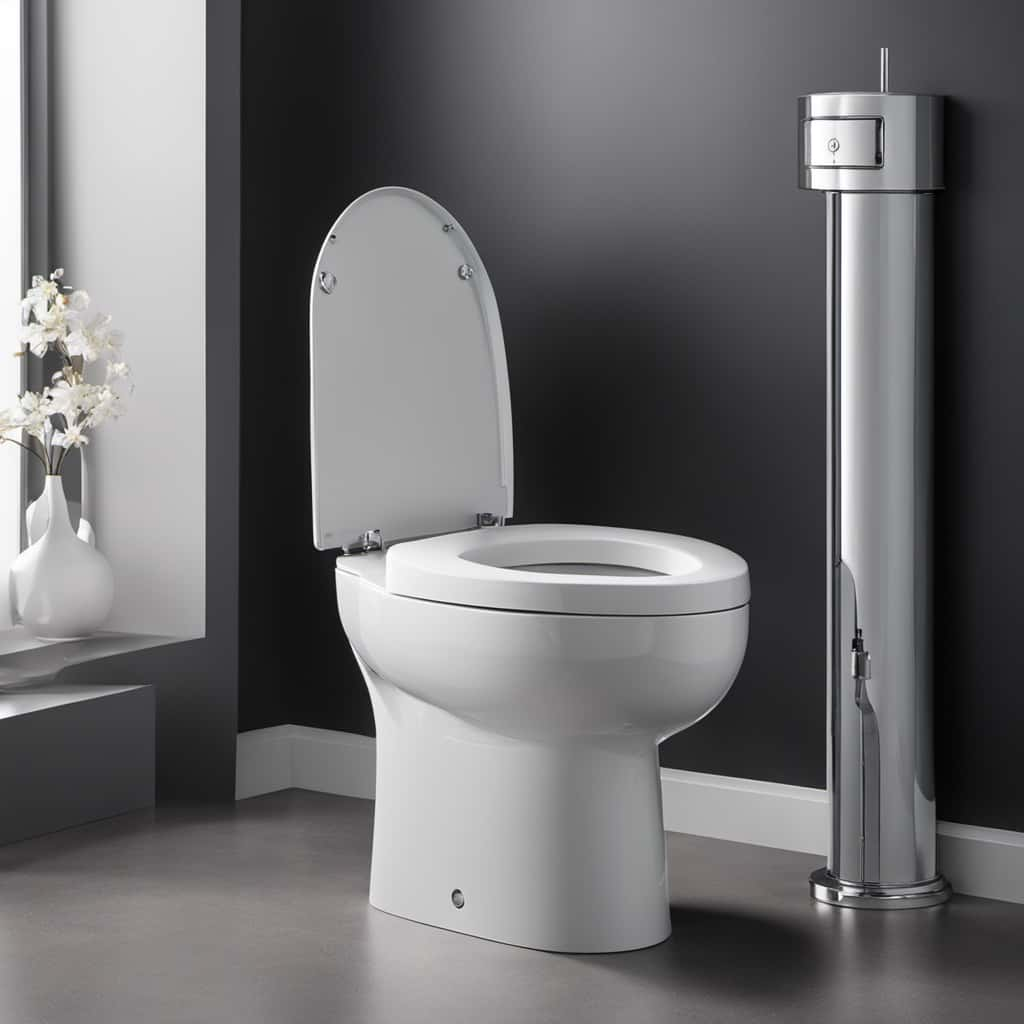
Effects on Marine Life
How do flushing toilets affect marine life?
Flushing toilets can have significant impacts on the marine ecosystem, leading to biodiversity loss. When wastewater containing chemicals, microplastics, and other pollutants is flushed down the toilet, it can find its way into rivers, lakes, and eventually the ocean.
These pollutants can have detrimental effects on marine organisms. Chemicals such as pharmaceuticals and cleaning agents can disrupt the hormonal balance of marine species, affecting their reproduction and growth. Microplastics, which are tiny pieces of plastic less than 5mm in size, can be ingested by marine organisms, causing internal damage and potentially leading to death.
The introduction of these pollutants into the marine ecosystem can disrupt the delicate balance of biodiversity, resulting in the loss of important species and the overall degradation of marine habitats.
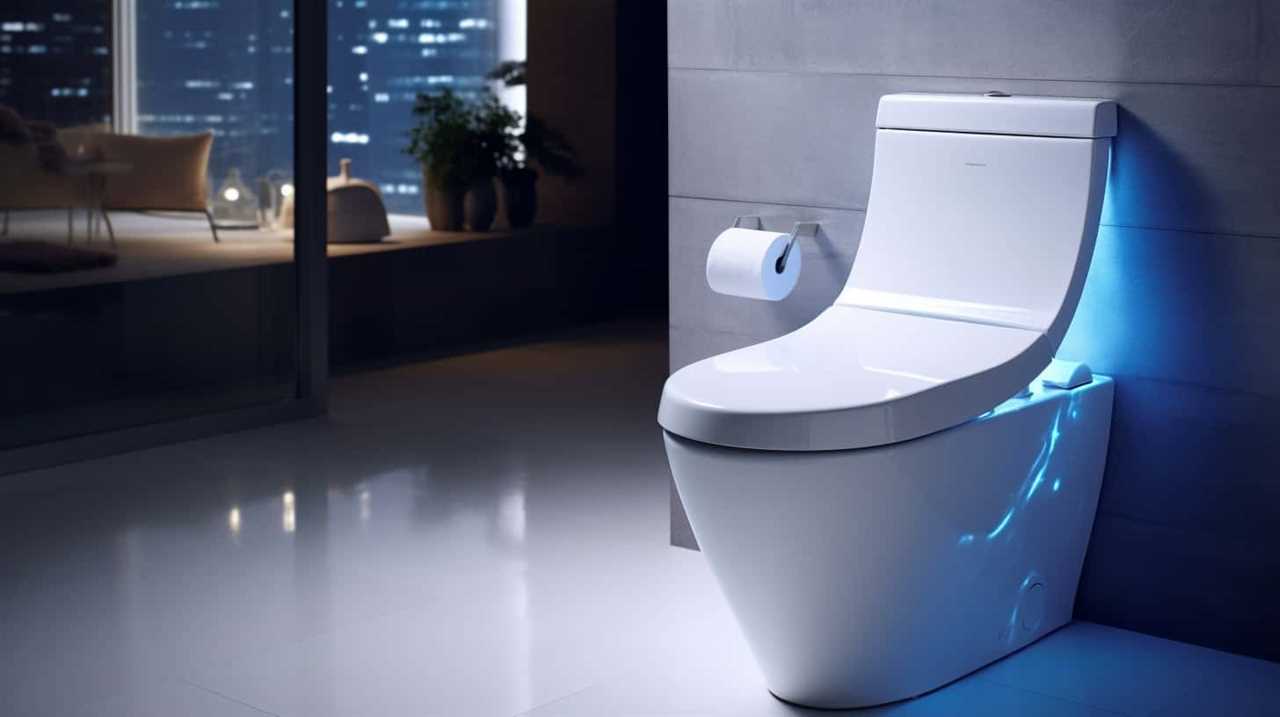
Disposal of Solid Waste
Toilet flushing results in the disposal of solid waste, including feces and toilet paper. Proper disposal of solid waste is essential for maintaining sanitation and preventing the spread of diseases.
Here are three commonly used disposal methods in waste management:
- Sewer System: In urban areas, solid waste is typically flushed down the toilet and transported through a network of underground pipes to a wastewater treatment facility. The treatment process removes contaminants and treats the waste before it’s discharged into the environment.
- Septic Tank: In rural areas or places without access to a sewer system, septic tanks are used. Solid waste is collected in a tank buried underground, where natural bacteria break down the waste over time. The effluent is then drained into a drain field for further treatment.
- Composting: Some individuals choose to compost solid waste, including toilet paper, for environmental reasons. This method involves collecting the waste in a compost bin or pile, where it decomposes into nutrient-rich soil that can be used for gardening or landscaping.
Proper disposal methods and effective waste management are crucial to maintaining hygiene and protecting the environment.
Health Risks Associated With Improper Flushing
The improper flushing of solid waste can pose significant health risks to individuals and communities. When solid waste is not properly flushed, it can lead to various health hazards and hygiene concerns. Contaminated water can become a breeding ground for harmful bacteria and viruses, which can spread diseases such as cholera, dysentery, and gastroenteritis. These diseases can cause severe diarrhea, dehydration, and even death, especially in vulnerable populations such as children and the elderly.
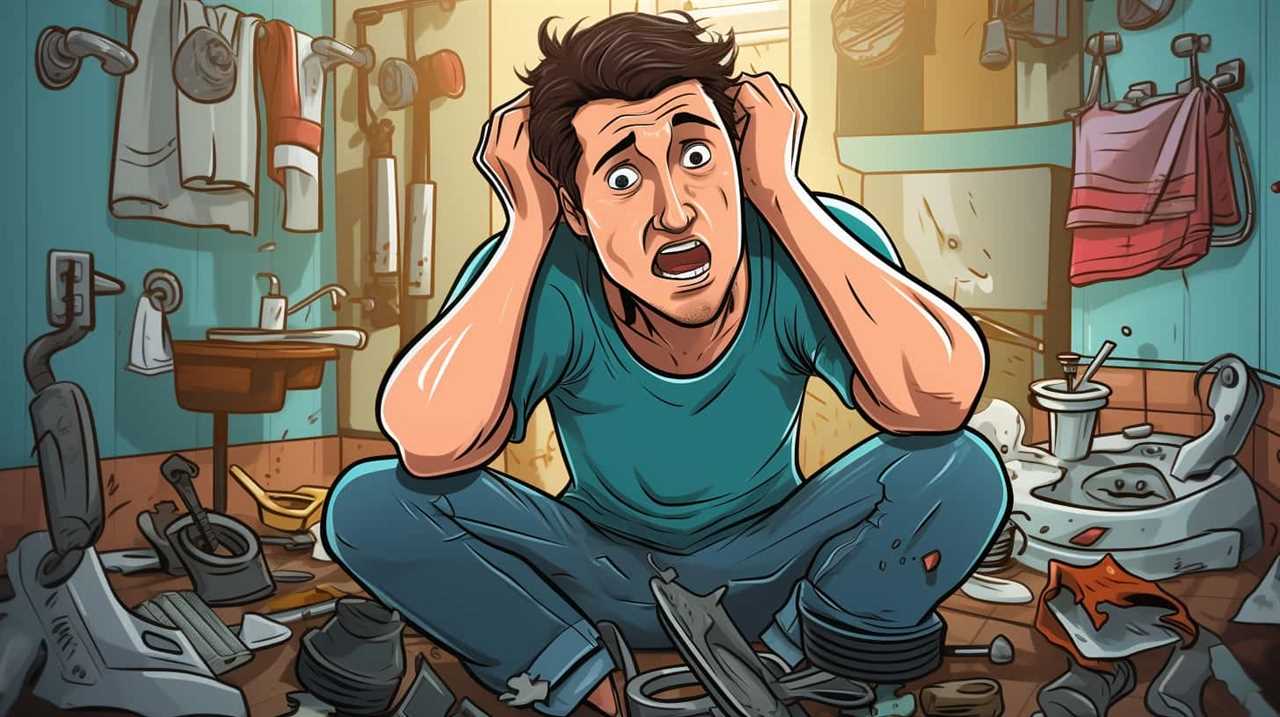
Improper flushing can also result in the release of foul odors and airborne particles, which can negatively impact indoor air quality and respiratory health. In addition, the accumulation of solid waste in toilets and sewage systems can lead to blockages and backups, increasing the risk of water contamination and the spread of diseases.
To emphasize the health risks associated with improper flushing, here is a table highlighting some of the key hazards and concerns:
| Health Hazards | Hygiene Concerns |
|---|---|
| Spread of diseases | Foul odors |
| Contaminated water | Airborne particles |
| Indoor air pollution | Respiratory problems |
| Blockages and backups | Water contamination |
It is crucial to promote proper flushing practices and ensure that individuals have access to clean and functional sanitation facilities to protect public health and hygiene.
Energy Consumption in Wastewater Treatment
When it comes to wastewater treatment, one key aspect to consider is the energy consumption involved. Energy efficiency plays a crucial role in reducing the carbon footprint of wastewater treatment facilities. Here are three important points to understand:

- Advanced Treatment Technologies: Implementing energy-efficient technologies such as anaerobic digestion, membrane bioreactors, and co-generation systems can significantly reduce energy consumption in wastewater treatment plants. These technologies optimize the treatment process while minimizing energy requirements.
- Renewable Energy Integration: Incorporating renewable energy sources like solar, wind, or hydroelectric power into wastewater treatment facilities can further enhance energy efficiency. By generating clean energy on-site, these plants can reduce their reliance on fossil fuels and lower their overall carbon emissions.
- Energy Recovery: Wastewater treatment plants can harness the energy contained in wastewater by using technologies like heat exchangers or biogas capture systems. By recovering and utilizing this energy, facilities can offset their energy consumption and reduce their environmental impact.
Impact on Septic Systems
When it comes to the impact of flushing toilets on septic systems, there are several important points to consider.
First, the overload of solid waste can lead to septic tank failures and system malfunctions, requiring costly repairs.
Additionally, the excessive water flow from flushing toilets can increase the risk of groundwater contamination, posing a threat to public health and the environment.
Lastly, regular maintenance and proper care of septic systems are essential to prevent these issues and ensure their long-term functionality.
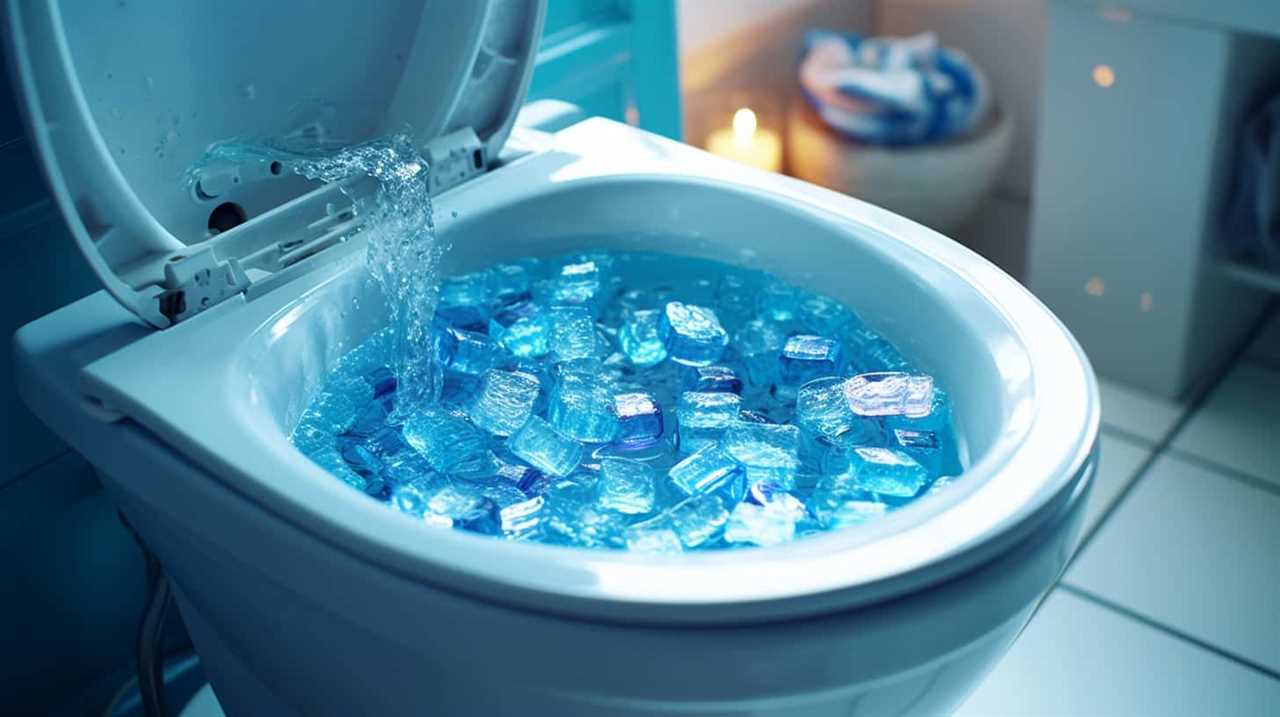
Septic Tank Overload
We discovered that flushing toilets can lead to septic tank overload, which can have a significant impact on septic systems. When a septic tank becomes overloaded, it means that it’s receiving more wastewater than it can handle. This can occur due to a variety of factors, such as excessive water usage, lack of septic tank maintenance, or failure to adhere to septic tank regulations.
The consequences of septic tank overload can be detrimental to the overall health and functionality of the septic system. Here are three key impacts:
- Clogging: The excess wastewater can overwhelm the septic tank, leading to clogging of the pipes and drains throughout the system. This can result in backups, foul odors, and potential damage to the pipes.
- System Failure: Overloading the septic tank can cause the system to fail, resulting in costly repairs or even the need for a complete replacement. This can disrupt daily activities and cause inconvenience for homeowners.
- Environmental Pollution: When a septic system is overloaded, untreated wastewater may leak into the surrounding environment, contaminating nearby soil and water sources. This can pose serious health risks and contribute to groundwater contamination.
Understanding the impact of septic tank overload emphasizes the importance of proper septic tank maintenance and adherence to regulations. Transitioning into the subsequent section about groundwater contamination risk, it’s crucial to recognize how septic tank overload can further exacerbate this issue.
Groundwater Contamination Risk
To further understand the impact of septic tank overload, let’s now delve into the risk of groundwater contamination and how it affects septic systems.
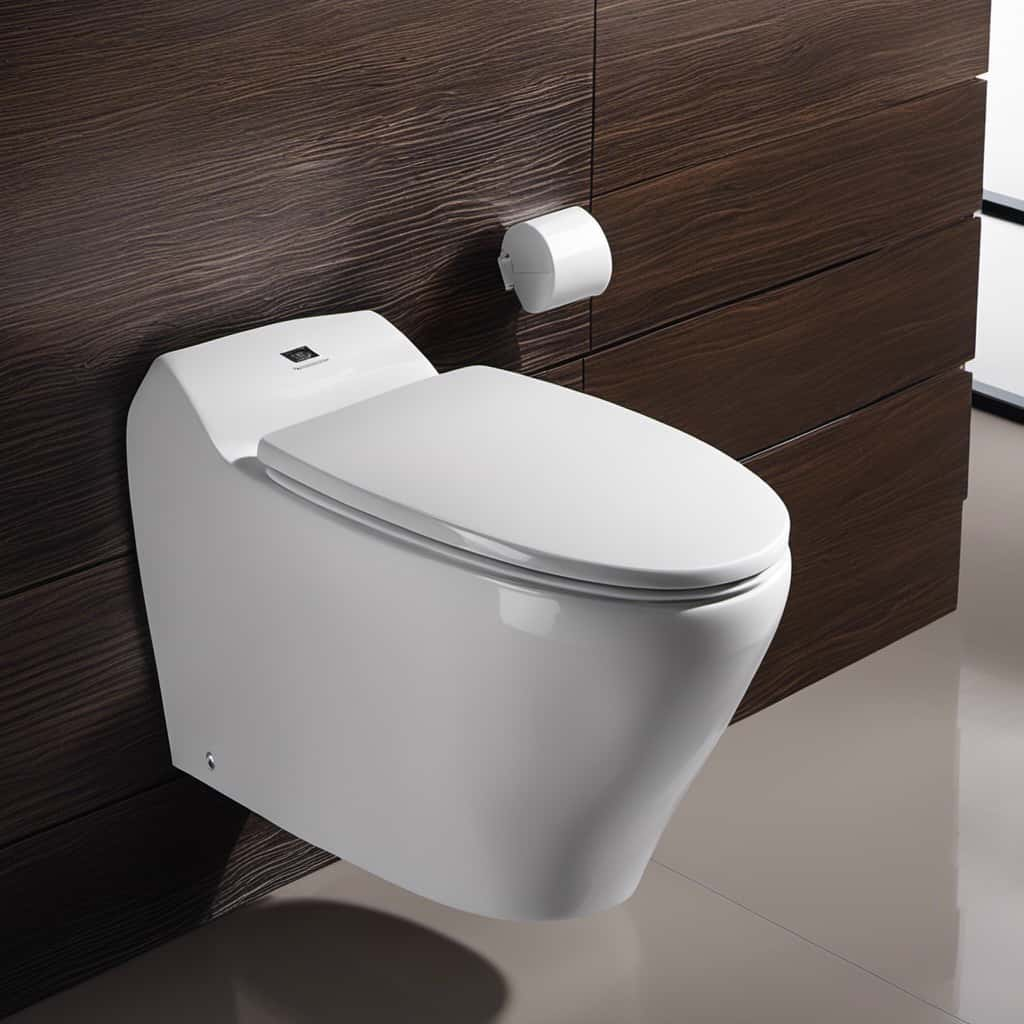
Groundwater contamination risk refers to the potential for harmful substances to infiltrate the groundwater supply, leading to environmental pollution. Septic systems play a crucial role in preventing groundwater contamination by treating wastewater from households and releasing it safely into the ground.
However, when septic tanks become overloaded, the risk of contamination increases. This occurs when the system is unable to handle the volume of wastewater, leading to improper treatment and potential leakage of untreated sewage into the ground. Such contamination can introduce harmful pathogens and pollutants into the groundwater, posing a significant risk to public health and the environment.
Therefore, proper maintenance and regular inspection of septic systems are essential to minimize the risk of groundwater contamination and ensure the protection of our water resources.
System Maintenance Requirements
Proper maintenance and regular inspection of septic systems are crucial for ensuring the effective functioning and longevity of these systems, as well as minimizing the risk of groundwater contamination. When it comes to system maintenance, there are several key considerations to keep in mind:
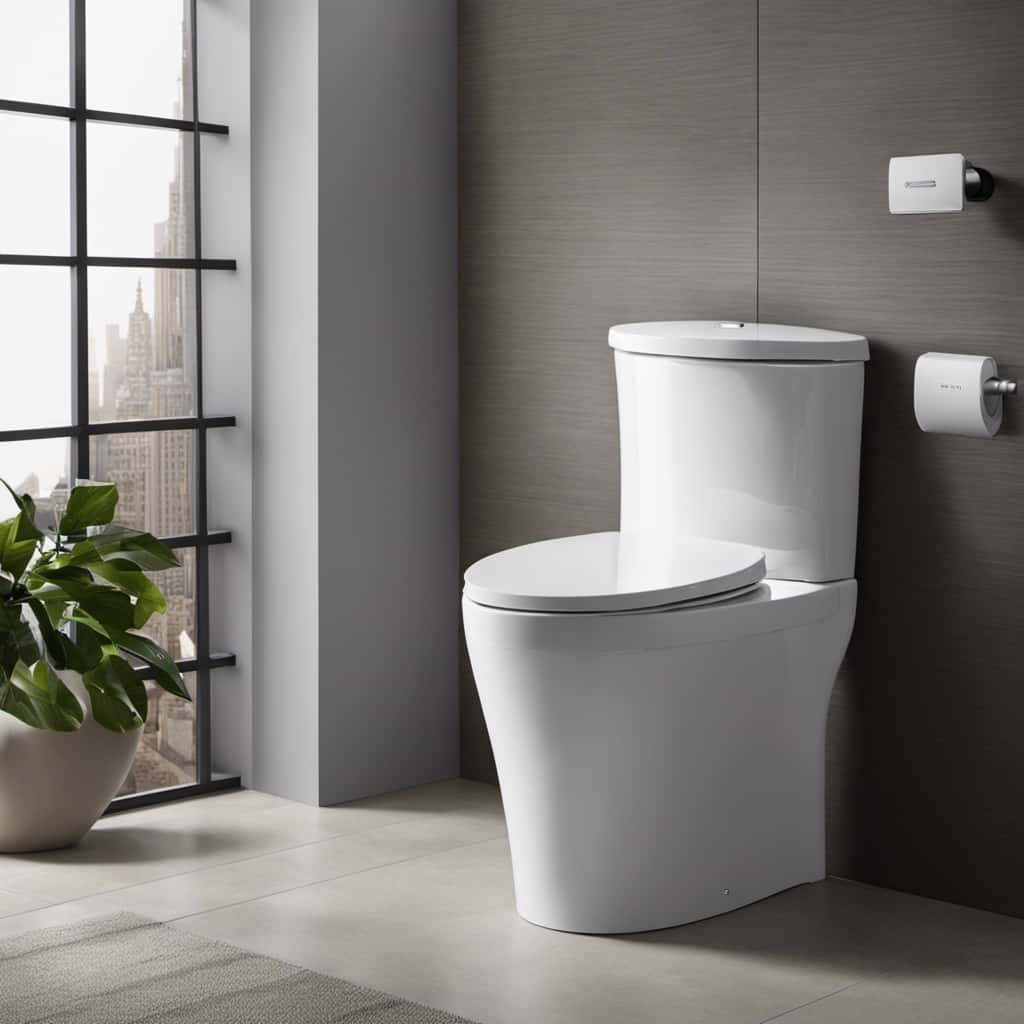
- Regular Pumping: Septic tanks need to be pumped on a regular basis to remove accumulated solids and prevent clogs. Neglecting this maintenance task can lead to plumbing issues such as blockages and backups.
- Monitoring Water Usage: Excessive water usage can overwhelm septic systems and disrupt their balance. It’s important to be mindful of water consumption and avoid overloading the system, as this can lead to costly repairs and potential system failure.
- Proper Waste Disposal: Septic systems are designed to handle specific types of waste. Flushing items such as diapers, sanitary products, or chemicals can cause damage to the system and compromise its performance.
By adhering to these system maintenance requirements, homeowners can ensure the proper functioning of their septic systems and minimize the risk of plumbing issues.
Now, let’s explore the impact of toilet flushing on global water scarcity.
Toilet Flushing and Global Water Scarcity
One potential effect of flushing toilets is the exacerbation of global water scarcity. The act of flushing toilets consumes a significant amount of water, which can contribute to water scarcity in regions where water resources are already limited. This issue is especially crucial in areas experiencing drought or facing challenges in accessing clean water.
To illustrate the impact of toilet flushing on water scarcity, consider the following table:

| Water Consumption per Flush (Liters) | Frequency of Toilet Flushing per Day | Total Water Consumption per Day (Liters) |
|---|---|---|
| 6 | 5 | 30 |
In this example, a single toilet flush uses 6 liters of water, and if a person flushes the toilet 5 times a day, it results in a total daily water consumption of 30 liters. Multiply this by the number of households and individuals globally, and the cumulative water consumption from toilet flushing becomes a significant factor contributing to water scarcity.
It is essential to address this issue through the development and adoption of more water-efficient toilet systems, such as dual-flush toilets or low-flow toilets. By reducing the amount of water consumed per flush, we can mitigate the impact of toilet flushing on global water scarcity while ensuring the maintenance of proper sanitation and public health standards.
Innovations in Toilet Technology
Now, let’s delve into the exciting world of toilet technology and explore the innovations that are revolutionizing the way we flush. Here are three remarkable advancements in toilet design and smart toilet technology that are shaping the future of our bathrooms:
- Innovative toilet designs: Manufacturers are pushing the boundaries of traditional toilet designs by incorporating sleek and modern aesthetics. From wall-mounted toilets that save space to dual-flush toilets that offer water-saving options, these designs not only enhance the overall look of the bathroom but also prioritize efficiency and sustainability.
- Smart toilet technology: With the rise of the Internet of Things, toilets are becoming smarter than ever. Smart toilets are equipped with features such as automatic flushing, self-cleaning capabilities, temperature-controlled seats, and even built-in bidets. These advanced technologies not only provide convenience and comfort but also contribute to water conservation efforts.
- Water-saving mechanisms: To address the issue of water scarcity, innovative toilet technologies are focused on reducing water consumption. Dual-flush toilets, for example, allow users to choose between a full flush and a half flush, conserving water with each use. Waterless toilets, composting toilets, and vacuum-assisted toilets are other sustainable alternatives that minimize water usage and contribute to a greener future.
As we explore the exciting world of toilet technology, it becomes clear that sustainable alternatives to traditional toilets are gaining momentum.
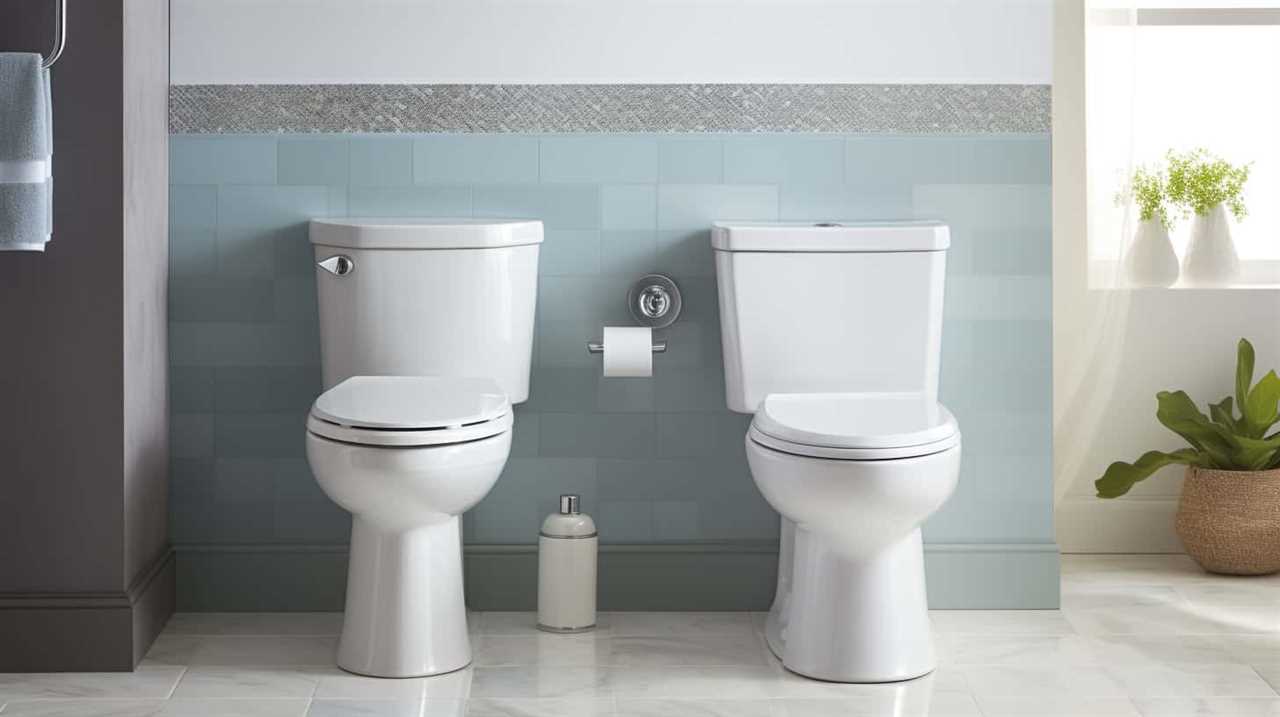
Sustainable Alternatives to Traditional Toilets
To continue our exploration of toilet technology, let’s now shift our focus to sustainable alternatives to traditional toilets. In our quest for environmentally friendly solutions, two notable options stand out: solar powered toilets and composting toilets.
Solar powered toilets harness the power of the sun to operate. These toilets typically consist of a solar panel that captures sunlight and converts it into energy, which is then used to power the toilet’s functions. This innovative technology not only reduces reliance on traditional energy sources but also minimizes carbon emissions.
Composting toilets, on the other hand, take a different approach. These toilets use a natural process called composting to break down human waste into nutrient-rich compost. By separating solid waste from liquid waste, composting toilets allow for the decomposition of organic matter, transforming it into a valuable resource for soil enrichment.
Both solar powered toilets and composting toilets offer sustainable alternatives to traditional toilets, contributing to a greener future by reducing energy consumption and promoting the reuse of waste materials.
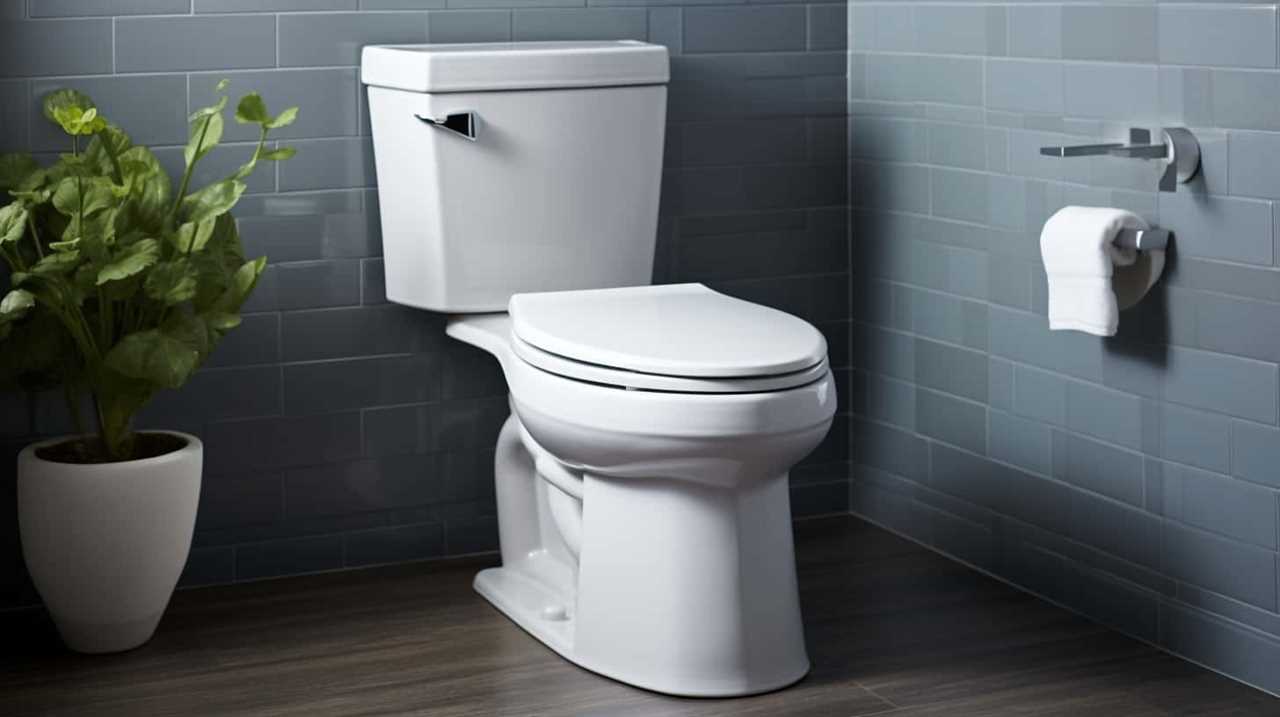
Conclusion
In conclusion, the effect of flushing toilets is significant and multifaceted. It impacts water usage, sewage systems, water sources, septic systems, and even contributes to global water scarcity.
However, innovations in toilet technology and sustainable alternatives provide hope for a more efficient and environmentally-friendly future. Like a refreshing and invigorating rain shower on a hot summer day, these advancements in toilet design bring relief and promise for a brighter future.




